10 Animals That Were Rediscovered After They Were Believed To Be Extinct
Categories: Animals | Nature | Photo project | World
By Vika https://pictolic.com/article/10-animals-that-were-rediscovered-after-they-were-believed-to-be-extinct.htmlNew Guinea singing dogs. This species was earlier believed to be extinct.
As many as 30-50% of all species are heading toward extinction by mid-century.
Human activity is responsible for 99% of currently threatened species through habitat loss, the introduction of exotic species, and global warming.
Freshwater ecosystems are now one of the most endangered habitats in the world due to human activity.
Named after the biblical story of the man who rose from the dead, the Lazarus taxon is several species that were rediscovered after being declared extinct, sometimes for centuries. These animal species range from tiny mice to miniature marsupials, pygmy elephants, several insects, a range of birds, and many others.
After falling extinct due to hunting, climate change, and loss of habitat, it is surprising when species resurface. These are 10 animals that have, figuratively, come back from the dead.
10 PHOTOS
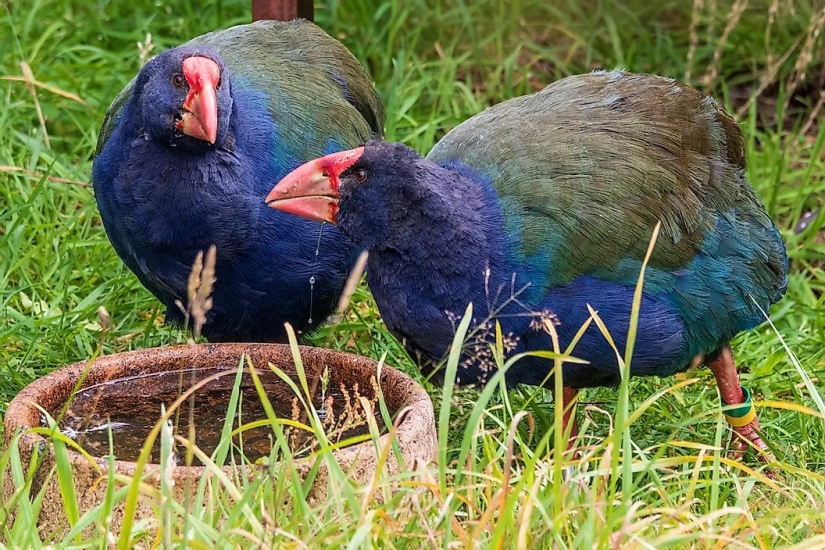
10. Takahe
Takahe at Orokonui Ecosanctuary in New Zealand. Image credit: Jef Wodniack/Shutterstock.com
This flightless bird is indigenous to New Zealand and went missing for nearly 50 years before being rediscovered near Lake Obell in Fiordland National Park. Their population dwindled when rats, cats, dogs, and pigs were introduced to New Zealand by Polynesian and European colonists, and it was believed the last of the population died out in 1898. In 1948, a team of explorers came across a takahe in the Murchison Mountains.
The shiny-backed, red-beaked birds are being protected within refuges on seven islands and many inland shelters in New Zealand to ensure their species is not lost a second time. There are now close to 300 takahes and in 2018, 30 of the birds were released into the wild for the first time in over a century.

9. The Chacoan Peccary
The Chacoan peccary or tagua (Catagonus wagneri) is the last extant species of the genus Catagonus. Image credit: Milan Rybar/Shutterstock.com
The peccary is similar in appearance to a pig but cannot be domesticated. When a fossil of the animal was discovered in Argentina in 1930, it was believed to have been extinct for thousands of years. However, in 1975 researchers found a live peccary in the Chaco region of Paraguay, and today there are 3,000 known animals. It turned out the Indigenous people of the Chaco region had known of its presence for years, but it had taken decades for scientists to learn it was still living. The Chacoan peccary is still listed as endangered.
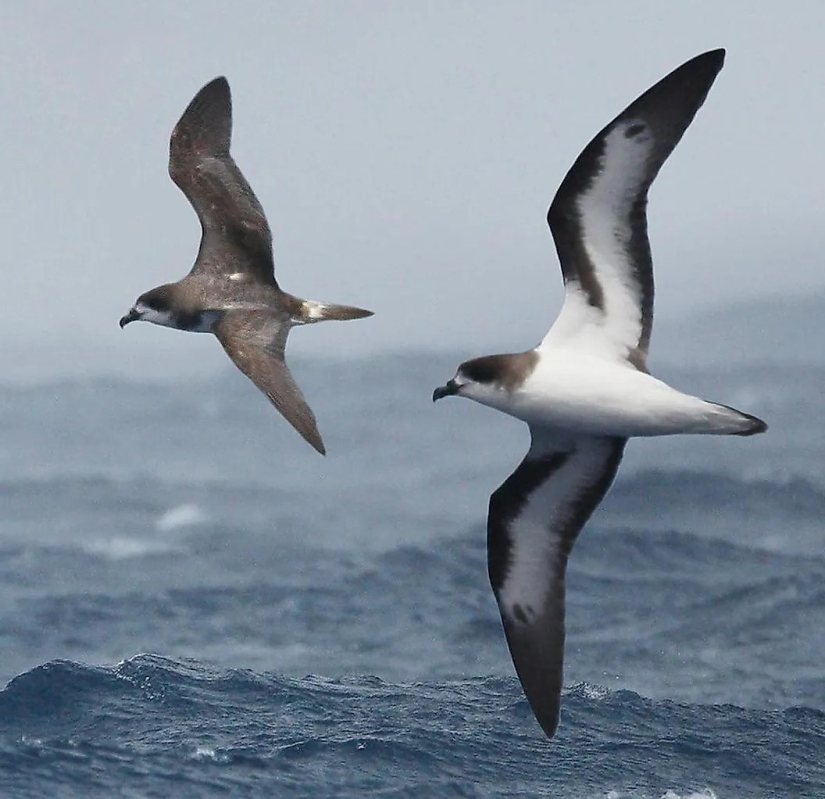
8. Bermuda Petrel
Bermuda Petrel From The Crossley ID Guide Eastern Birds. Image credit: Richard Crossley/Wikimedia.org
Known as one of the most inspiring discoveries in the world of nature conservation, the Bermuda petrel was rediscovered after being presumed extinct for 330 years. The bird had not been seen since the 1620s before 18 nesting pairs were discovered in 1951 on remote islets in Castle Harbor. Centuries ago, the birds were so abundant explorers from Europe called Bermuda an island of demons and feared the mating calls of the birds would inspire sailors, but soon they discovered the birds' eggs were a reliable food source found easily in ground-level nesting sites. Soon afterward domestic animals brought by European settlers also found the eggs and the population was devastated.
Today, after half a century of work to manage nests and pests, the Bermuda petrel is slowly on the rise, with an estimated 250 birds in existence.

7. Venomous Cuban Solenodon
Specimen of a Cuban solenodon at the New York Zoo. Image credit: New York Zoological Society (present-day Wildlife Conservation Society)
The venomous Cuban solenodon is one of the few mammals to use poisonous saliva as a defense. Originally discovered in 1861, it was declared extinct when evidence of the mole-like creature had not been seen for more than 80 years due to habitat destruction. But in 1973 and 1974, three different specimens were found by researchers and are still living in Cuba today. Another venomous Cuban solenodon was found in 2003, and after being captured and named Alejandro, the animal was studied and then released back into the wild.
6. La Palma Giant Lizard
The La Palma giant lizard was believed to be extinct for 500 years before one was rediscovered in 2007, in the La Palma region of the Canary Islands. Its population was decimated by hunting and the introduction of cats into its environment. The lone lizard was about one foot long and an estimated four years old, and new expeditions are still being planned in hopes of finding a breeding population of the long-lost lizard.
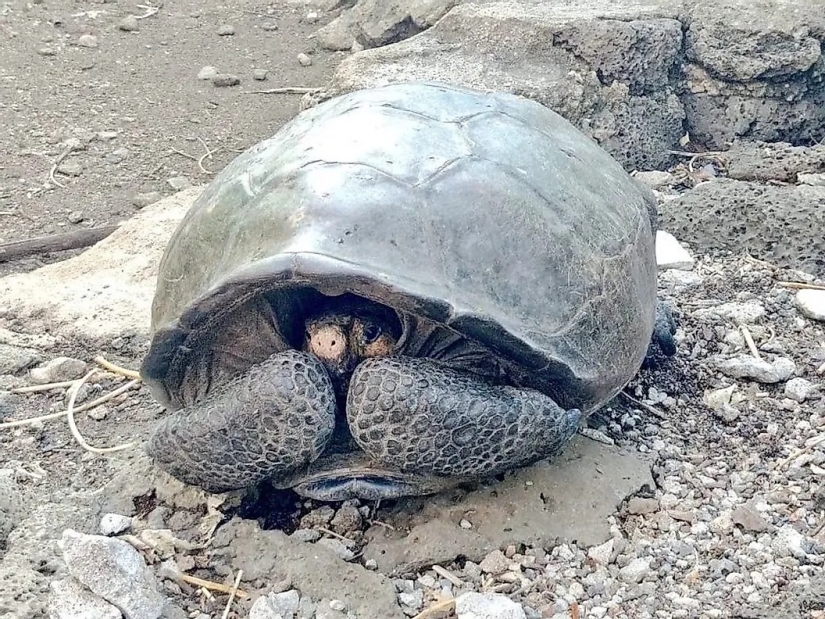
5. Fernandina Giant Tortoise
A Fernandina giant tortoise. Image credit: www.globalwildlife.org
In 2019, a female Fernandina giant tortoise was found in the Galapagos Islands, more than a century after the last known tortoise was seen in 1906. Her age is estimated at over 100 years old, meaning she's been wandering the island since before extinction was declared. There have been more scents and tracks found around Fernandina Island where she was found, giving researchers reason to believe she's not the only tortoise remaining.
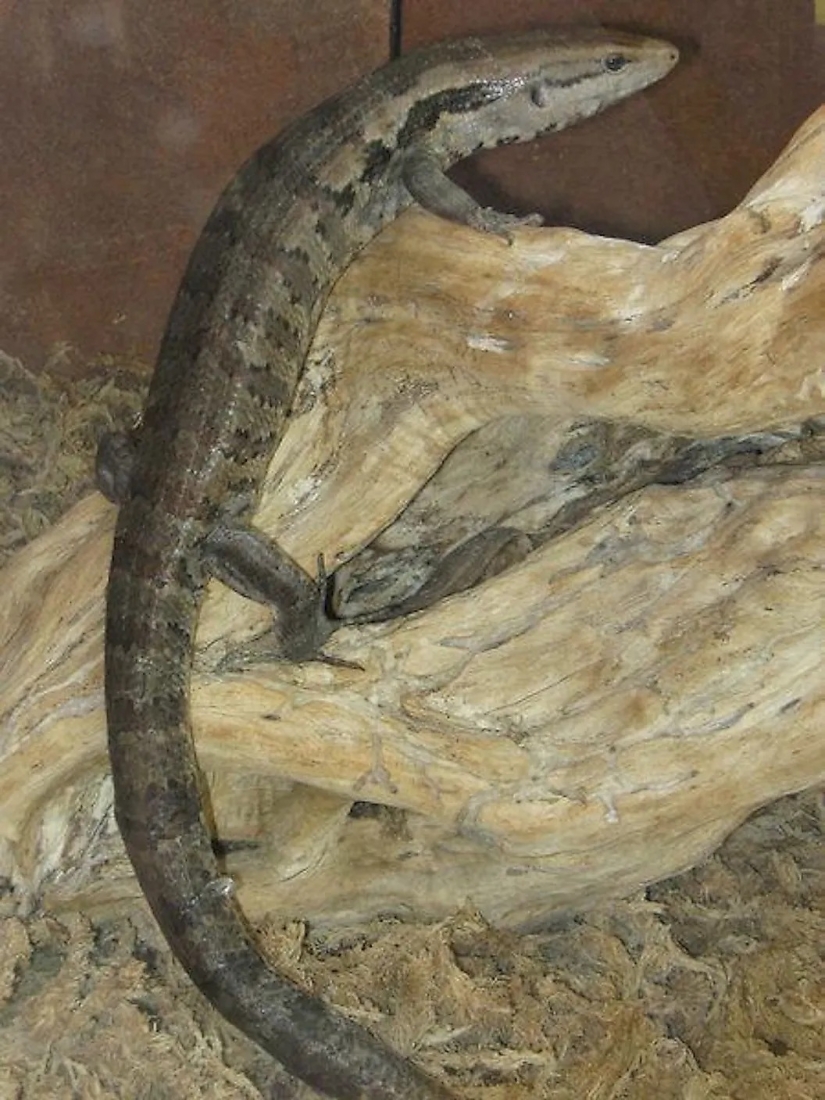
4. The Terror Skink
The terror skink. Image credit: alchetron.com
A lone terror skink was spotted on an island off the coast of the French archipelago New Caledonia, in the South Pacific Ocean, and it wasn't rediscovered until 2003. Called a terror skink because it is a meat-eater equipped with long, sharp, curved teeth, the lizard has now been confirmed to exist on similar small islands in the South Pacific and is considered a top predator.
3. Philippine Naked-Backed Fruit Bat
Naked-backed fruit bats were declared extinct in 1996 when not even one of the animals had been seen since 1964, but the Philippines native resurfaced in 2001. When its population was abundant, the guano it produced was mined and used as fertilizer, but its numbers declined partly because of hunting for its meat, and mainly because the fruit-filled forests it relied on for sustenance were replaced by sugar cane fields. The fruit bat is now threatened as its habitat on the Cebu and Negros Islands remains unprotected.

2. New Guinea Highland Wild Dog
New Guinea highland wild dog. Image credit: Tomcue2 from Chicagoland, IL/Wikimedia.org
The New Guinea highland wild dog, the rarest and most ancient canine species in the world, is a distant relative of the Australian dingo that went extinct 50 years ago. About 15 of the dogs were found in 2017 in the remote Sudirman Mountains in Indonesia, which researchers said was enough to make up one thriving pack.
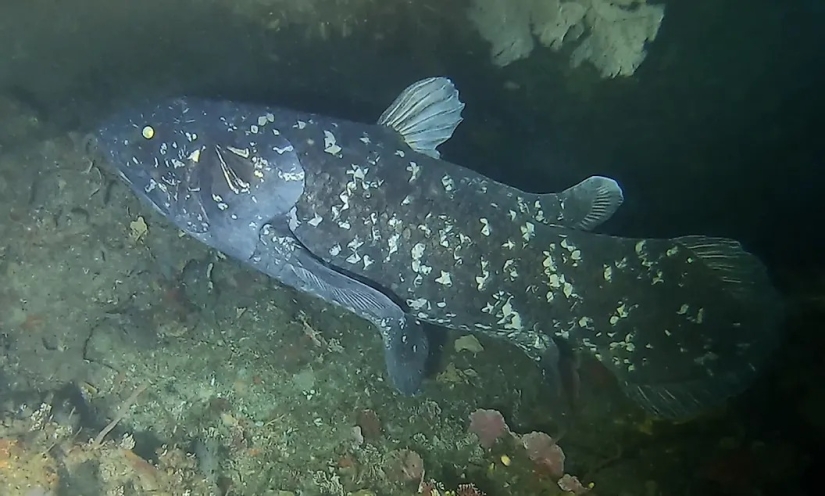
1. Coelacanth
Coelacanth off Pumula on the KwaZulu-Natal South Coast, South Africa. Image credit: Bruce A.S.Henderson
Thought to have gone extinct 65 million years ago by way of the meteor impact that killed the dinosaurs, the coelacanth, a six-foot-long, 200-pound, lobe-finned fish, was caught off the coast of South Africa in 1938. In 1998, a second fish was caught near Indonesia. They typically live up to 2,300 feet below sea level and dwell in deep-water caves. Though it is estimated about 500 coelacanths are left alive, the fish is still listed as critically endangered, facing the threat of oil exploration off the coast of South Africa.
Keywords: Animals | Rediscovered animals | Dogs | World | Nature | Human activity
Post News ArticleRecent articles

In November 69 BC, she was born Cleopatra, the last Queen of Egypt from the Macedonian dynasty of the Ptolemies. Cleopatra, perhaps ...

Explosions of smartphone batteries and short circuits in sockets no longer become a sensation, but few people know that the danger ...
Related articles

Nature is infinitely creative, but sometimes she's so like his own creation, she decides to repeat their children. Prikosatsya ...

Yes, Pets benefit our health and it is proven by science. Their very existence certainly makes us happier, but also prolongs life. ...

A series of works by photographer Brian VILS from new York, dedicated to girls, sheltered the homeless and abandoned cats. 'brien ...

It is believed that the appearance of gray hair — it is a sign of aging, the gradual extinction of the organism. Many ...